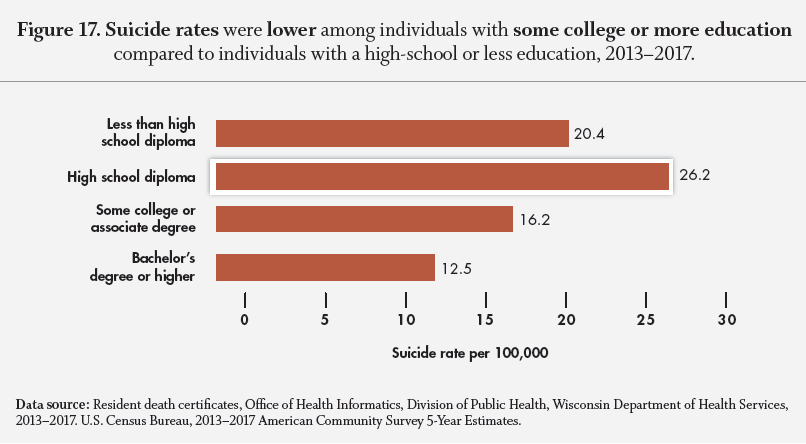The amount of education that an individual has received is often used as a way to provide insight on the person’s financial stability, which is known to affect mental health and well-being. According to the data, individuals with a high school diploma and no post-secondary education appeared to be at heightened risk for suicide, while individuals with a bachelor’s degree or higher appeared to be at reduced risk.

Figure 17. Among all suicide deaths, 3,625 had known educational attainment and were 25 years of age or older from 2013–2017. From this sample, 352 had less than a high school diploma, 1,626 had a high school diploma, 974 had some college credits or an associate degree, and 673 had a bachelor’s degree or higher. The rate of suicide among those with a high school diploma as the highest level of educational attainment was significantly higher than all other educational levels from 2013–2017.